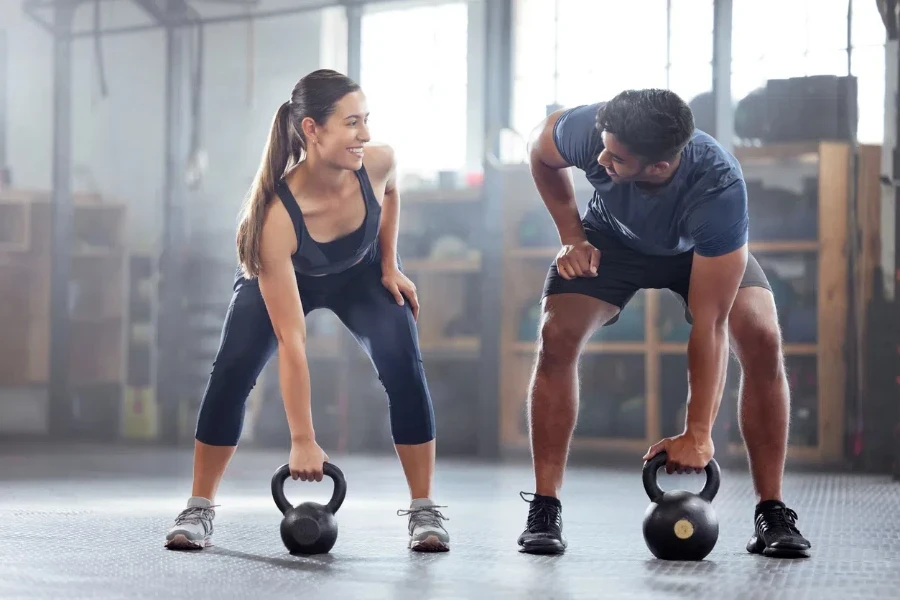In the realm of fitness, dumbbell workouts stand out for their versatility and effectiveness. Whether you’re a beginner or a seasoned athlete, incorporating dumbbells into your routine can offer a wide range of benefits, from improving muscle tone to boosting overall strength. This article delves into the core aspects of dumbbell workouts that enthusiasts care about, providing a comprehensive guide to enhancing your exercise regimen.
Table of Contents:
– Understanding the Basics of Dumbbell Workouts
– Designing a Balanced Dumbbell Routine
– The Importance of Proper Form and Technique
– Overcoming Plateaus with Progressive Overloading
– Integrating Dumbbell Exercises into Your Daily Routine
Understanding the Basics of Dumbbell Workouts

Dumbbell workouts are a cornerstone of strength training, appealing to both novices and professionals due to their simplicity and the broad spectrum of exercises available. At its core, a dumbbell workout involves using a pair of dumbbells to perform a variety of exercises that target different muscle groups. The key to a successful dumbbell workout lies in understanding the mechanics of each exercise and how it contributes to your fitness goals.
The versatility of dumbbell exercises allows for a comprehensive workout that can engage all major muscle groups, including the chest, back, arms, legs, and core. This adaptability makes it possible to design a routine that aligns with your specific objectives, whether you’re looking to increase muscle mass, enhance endurance, or improve functional strength.
Moreover, dumbbell workouts can be easily modified to match your skill level. Adjustments in weight, repetition, and technique can help cater the workout to your individual needs, ensuring a challenging yet achievable exercise session.
Designing a Balanced Dumbbell Routine

Creating a balanced dumbbell routine is crucial for achieving optimal results while minimizing the risk of injury. A well-structured plan should encompass exercises that target all the major muscle groups, ensuring a harmonious development of strength and flexibility across the body.
To design an effective routine, start by selecting a mix of compound and isolation exercises. Compound exercises, such as dumbbell squats and presses, work multiple muscle groups simultaneously, offering efficient workout sessions. Isolation exercises, on the other hand, focus on a single muscle group, allowing for targeted strength building and muscle definition.
Frequency and volume are also vital considerations. A balanced routine typically involves working out three to five times a week, with a variety of exercises to keep the body challenged and prevent boredom. It’s essential to allow adequate rest between workouts targeting the same muscle group to promote recovery and muscle growth.
The Importance of Proper Form and Technique

The significance of maintaining proper form and technique during dumbbell workouts cannot be overstated. Correct form ensures that the targeted muscles are effectively engaged, maximizing the benefits of each exercise while reducing the risk of injury.
One common mistake is using momentum to lift the weights, rather than controlling the movement through muscular effort. This not only diminishes the effectiveness of the exercise but also increases the likelihood of strain or injury. Focusing on slow, controlled movements, with a full range of motion, can help in engaging the muscles more effectively.
Additionally, breathing plays a critical role in dumbbell workouts. Exhaling during the exertion phase of the exercise and inhaling during the release can enhance performance and prevent unnecessary strain.
Overcoming Plateaus with Progressive Overloading

Progressive overloading is a fundamental principle in strength training, essential for continuous improvement. It involves gradually increasing the weight, frequency, or number of repetitions in your workouts to challenge your muscles beyond their current capabilities.
Incorporating progressive overloading into your dumbbell routine can help in overcoming plateaus, periods when you cease to see progress despite consistent effort. By continuously challenging your muscles in new ways, you can stimulate growth and strength gains, ensuring that your fitness journey keeps moving forward.
It’s important to approach progressive overloading with caution, increasing the intensity of your workouts in small increments to avoid overtraining or injury. Listening to your body and allowing sufficient time for recovery are key components of a sustainable approach to fitness.
Integrating Dumbbell Exercises into Your Daily Routine

Incorporating dumbbell exercises into your daily routine can significantly enhance your fitness journey, offering convenience and flexibility that few other forms of exercise can match. With just a pair of dumbbells, you can perform a wide array of exercises at home, eliminating the need for expensive gym memberships or equipment.
To integrate dumbbell workouts effectively, consider setting specific times for your exercise sessions and creating a dedicated space for your workouts. Establishing a routine can help in maintaining consistency, a critical factor in achieving long-term fitness goals.
Additionally, combining dumbbell exercises with other forms of physical activity, such as cardio or flexibility training, can provide a well-rounded fitness regimen that promotes overall health and well-being.
Conclusion: Dumbbell workouts offer a versatile and effective means of enhancing your fitness routine. By understanding the basics, designing a balanced routine, maintaining proper form, overcoming plateaus with progressive overloading, and integrating exercises into your daily life, you can unlock the full potential of dumbbell workouts. With commitment and consistency, the path to improved strength, endurance, and muscle definition is well within reach.




